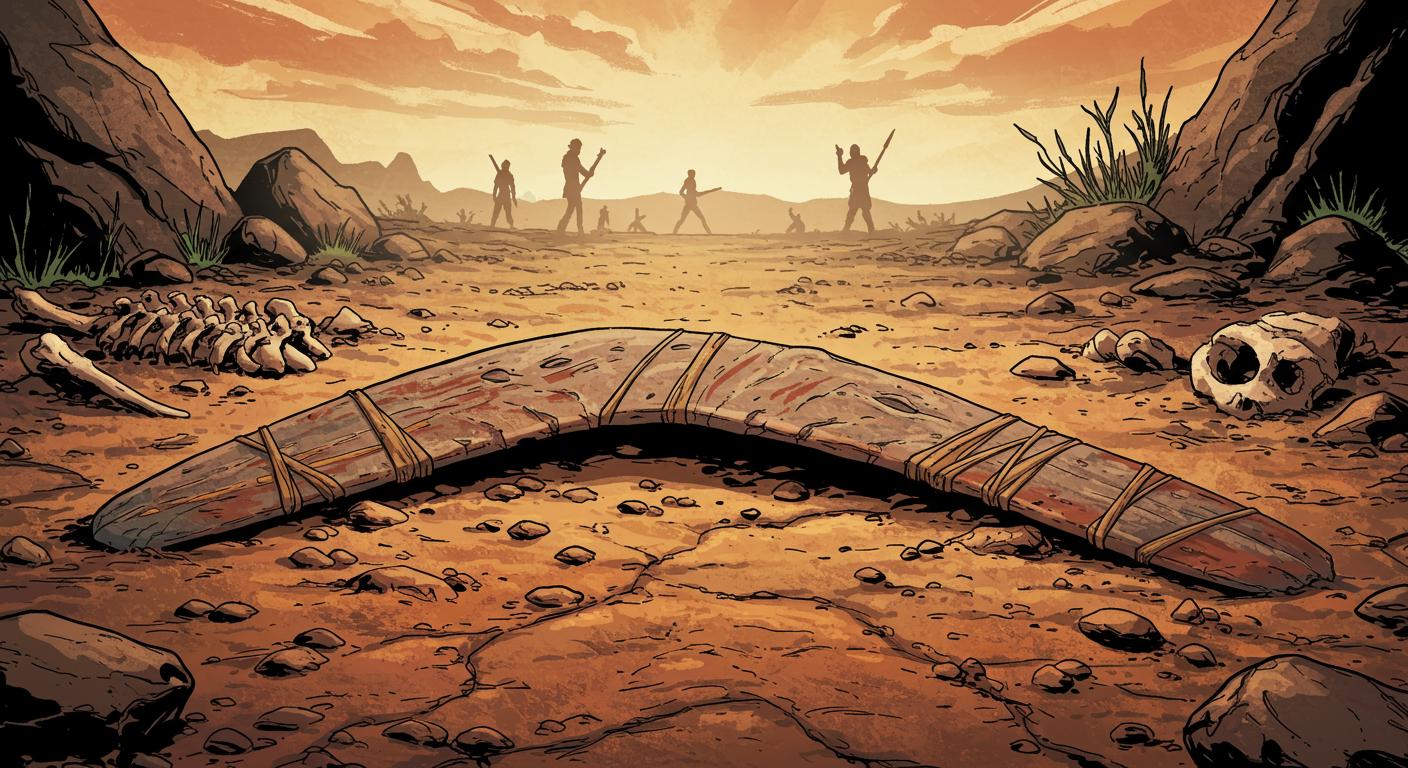Every generation thinks they’ve invented the latest must-have accessory, but sometimes history loops back with a twist—or, in this case, gently thuds to a stop. According to BBC News in a report as delightfully perplexed as the find itself, what’s now considered the world’s oldest boomerang is, technically, not a boomerang at all in the sense we’re used to.
When a Boomerang Is Just a Carved Mammoth Tusk
Research recounted in the BBC piece describes how archaeologists in southern Poland, specifically at Oblazowa Cave, unearthed a curved artifact carved from mammoth ivory during an excavation in 1985. With the benefit of updated, more reliable radiocarbon dating techniques applied to human and animal bones at the cave, the item’s age is now set between 39,000 and 42,000 years old. This means it predates previous estimates by a good 10,000 years—a rounding error, essentially, if you’re a mammoth.
But here’s where expectations get tangled: detailed analysis, as reported, shows the object would have flown through the air if thrown, but on a strictly one-way ticket. It wouldn’t have come back, a fact that either disappoints fans of boomerang physics or reassures those who’ve ever sent a “come-back” boomerang sailing off into the abyss, never to return. Dr. Sahra Talamo of the University of Bologna, quoted in the BBC coverage, noted that the tool’s craftsmanship provides a “remarkable insight” into how early humans shaped “such a perfect object” that could serve as a hunting weapon. The outlet also highlights distinctive score marks along the artifact, indicating it was polished and carved for use by a right-handed individual.
Isn’t it fascinating to consider that Homo sapiens—while busy dodging enormous, furry mammals—took the time to devise and customize their hunting gear to this degree? Was it inventiveness, rigor, or just the Paleolithic version of a particularly competitive neighbor?
The Worldwide Boomerang Club: You’re Probably Not a Member
One of the persistent myths is that the boomerang is a uniquely Australian phenomenon. The BBC article clarifies, though, that while returning boomerangs are iconically linked to Aboriginal Australian culture—where the oldest found specimen is about 10,500 years old, crafted from wood—curved throwing sticks pop up across the ancient world. The report references finds ranging from a 7,000-year-old wooden piece in Jutland, nestled between Denmark and Germany, to a 2,000-year-old oak specimen found in The Netherlands that, unlike the Polish model, genuinely made the full round trip.
Yet Oblazowa Cave’s artifact stands out for its age, material, and size—BBC refers to its length as “about the size of a baseball bat”—and that it’s likely the only boomerang-shaped object of such antiquity and make found in Poland. It’s almost as if ancient humans had a worldwide group chat going: “Try this shape for mammoth hunting; trust me, works great. Returning feature—nice, but optional.”
As previously noted, these implements probably weren’t just about their utility. The BBC report points out that ritualistic or artistic significance can’t be ruled out. Considering the location—nestled amongst piles of stone tools, animal remains, and even human bones—Oblazowa’s boomerang hints at a culture that valued style as well as function. You have to wonder: was this an everyday item, or the prehistoric equivalent of a display-only samurai sword?
The Legacy of a Very Fancy Stick
Ultimately, is anyone let down by the fact that the “world’s oldest boomerang” doesn’t return on command? The word “boomerang” conjures cinematic scenes of spinning, physics-defying arcs, but humanity’s oldest version was more of a one-way specialist than a showboat. As Dr. Talamo described and the BBC emphasizes, what matters most is the ingenuity on display—imagine the knowledge required to shape a mammoth tusk into such a streamlined, purposeful form, four ice ages ago.
So maybe perfection isn’t about boomeranging back, but rather about adapting to your era’s most pressing needs—even if that’s just finding something sturdy enough to bring down a small mammoth or, quite possibly, to impress your cave neighbors.
If history is any indication, we’ve been designing, customizing, and losing things for ages. Perhaps some innovations don’t come back, but the stories always manage to return—sometimes with the dry amusement of discovering the world’s oldest “boomerang” is really just a very determined stick.







